What Are the Differences Between VCR and VHS?
During the 1980s and 1990s, VCRs (videocassette recorders) and VHS videotapes were ubiquitous in homes across America. Many of us have fond memories of popping a VHS tape into the VCR to watch a movie or recording our favorite TV shows to watch later. However, though the terms VCR and VHS are often used interchangeably, they actually refer to related but distinct technologies.
In this article, we will explore what exactly VCRs and VHS tapes are, how they work together to play videos. On the VCR vs VHS section, you can see key differences between the two formats. Understanding these differences can provide some interesting insights into the consumer video technologies that revolutionized home entertainment just a few decades ago.
Part 1. What is VCR (Video Cassette Recorder)?
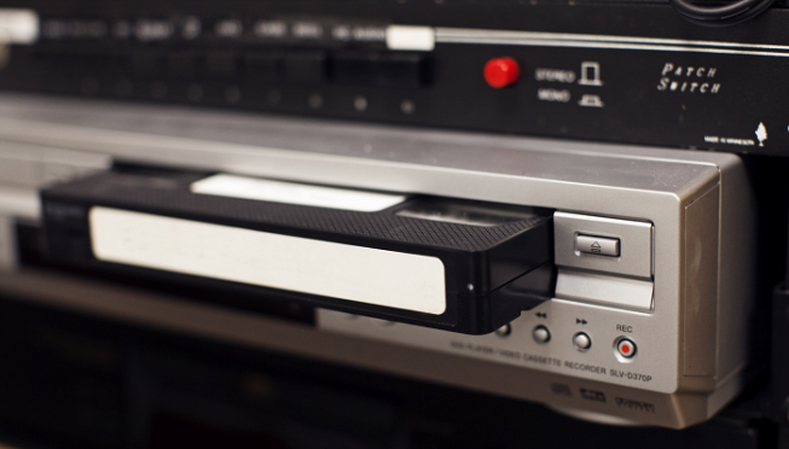
A VCR, which stands for videocassette recorder, is a device that allows users to play pre-recorded videocassette tapes as well as record television broadcasts onto blank videotape cassettes so they can be viewed later. First released in the late 1970s, the VCR became an immensely popular household technology in the 1980s as prices dropped and more film studios released movies on videotape.
1. When Did VCR Become Common?
VCR adoption accelerated in the 1980s as prices became more affordable for the average family. Key reasons more homes added VCRs during this decade include:
- Prices of standalone VCR units dropped below $500 on average
- More film studios partnered with VHS manufacturers to release movies on videotape
- Advertising promoted VCRs as ways to build home movie libraries and control viewing
2. What Does VCR Stand For?
Now you know when did VCR come out. Some key features that define VCRs include:
- Ability to play pre-recorded videocassette tapes when inserted into the VCR
- Recording capabilities to store television broadcasts on blank videotapes to view later
- Electronic timer to schedule recordings of TV shows in advance
- Input/output ports to connect to a separate television as well as cable box or antenna
Part 2. What is VHS (Video Home System)?
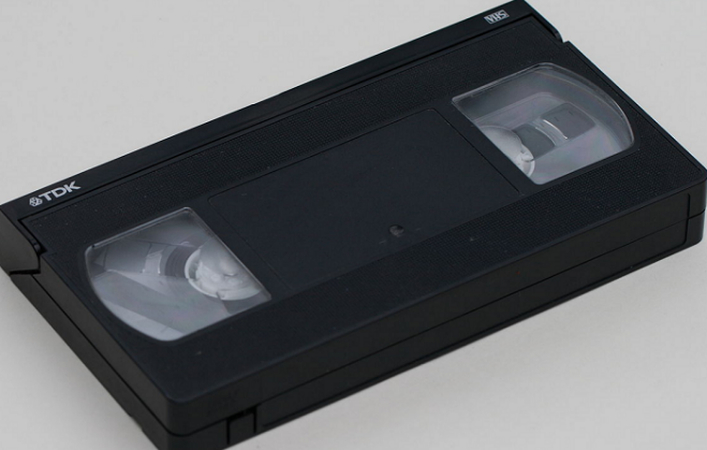
VHS, or Video Home System, refers to the standard analog recording videotape cassette format developed in the 1970s. VHS cassettes contain magnetic tape that has video and audio recordings encoded onto it, which VCRs can then read to play back movies or TV shows on a television screen. Blank VHS tapes could also record content from television broadcasts. By the late 1980s, the VHS format had beaten out early competitors to become the most widely used home video standard. Now you know what is VCR vs VHS player all about.
1. When Did VHS Become Common?
VHS gained steam in the late 70s and dominated by the 1980s when:
- Film studios ramped up movie release on pre-recorded VHS tapes
- Prices of VCRs and tapes dropped, making adoption affordable
- Regional coding allowed global standardization
If you wonder when did VCR become common, the answer is pretty much the same.
2. What Does VHS Stand For?
Some characteristics of the VHS cassette system include:
- Magnetic tape to store analog video and audio signals
- Standardized cassette shape and size to insert into VCR
- Durability and recording lengths up to 6 hours
- Regional playback coding to support global format distribution
Part 3. What is the Main Differences Between VCR and VHS?
Now you know what does VHS and VCR stand for. What the difference between VCR and VHS? The key difference between VCRs and VHS tapes is that a VCR is a device that plays, records, and erases video content, while a VHS cassette is the physical video storage unit that contains tape to save that content. A VCR processes and stores audio and video data, while VHS tapes simply hold the information.
More specifically:
- VCRs are electromechanical devices that have reading heads to play back footage stored on tapes, an internal tuner to pick up television signals, and recording components that can translate signals onto magnetic tape. VHS cassettes are plastic cartridges that contain magnetic tapes; they rely on VCR mechanisms in order to actually play or record anything.
- VCRs represent active technology - they require motors to move tape, circuit boards to translate electrical signals, buttons and switches for user control, etc. VHS cassettes are passive devices, depending entirely on interactions with a VCR to access the magnetic data stored on their tapes.
To summarize, a VCR determines what can be recorded, played, and erased while the VHS tape simply stores the video content through static magnetic encoding on ribbons of tape inside a plastic housing. They work hand-in-hand to create a video playback ecosystem. Based on this, you can understand what the difference between VCR and VTS too.
Part 4. How to Convert VHS to Digital Without A VCR?
As VCRs become obsolete, digitizing old VHS recordings is key for preservation. However, many lack access to a working VCR player. This is where software like HitPaw Univd (HitPaw Video Converter) comes in handy. With HitPaw Univd, users can convert VHS tapes directly to digital without hardware.
1. HitPaw Univd
HitPaw Univd is an intuitive program for digitizing analog media into modern formats. To convert VHS, you first connect a VCR to your computer using composite/component cables. From there, HitPaw captures and compresses the VHS input in real-time while applying enhancements. Supported output formats include MP4, MOV, and more.
Beyond VHS conversion, HitPaw Univd lets you record footage from other legacy sources like camcorders, DVD players, and analog game systems. Advanced options help rescue damaged tapes with optimizations for clarity, aspect ratio, brightness, contrast and stabilization. The software combines performance and efficiency, so users achieve high-quality results without advanced technical knowledge. For those with boxes of old VHS tapes, it finally offers an all-digital solution.
HitPaw Univd - All-in-one Video Solutions for Win & Mac
Secure Verified. 254,145 people have downloaded it.
- Real-time VHS to digital conversion ensures no original quality loss.
- Advanced VHS repair tools cleanly restore tracking, brightness and clarity.
- Direct copying preserves authentic attributes like subtitles and closed captions.
- Customizable exporting into MP4, AVI, MOV plus many other formats.
- Intuitive interface for easy tape digitization requiring no complex settings.
Secure Verified. 254,145 people have downloaded it.
How to Convert VHS to Digital?
Step 1: Download and Install HitPaw Univd
Go to the official HitPaw website, download the free trial version of their Video Converter software for either Mac or Windows PCs depending on your machine, then run the installer and follow prompts to guide you through entire quick installation process.
Step 2: Obtain VHS Footage
Without access to a VCR deck itself, you will need to first track down and acquire legacy VHS content whether finding playable tapes or sourcing pre-digitalized VHS files from old family videos, video sites, or footage databases to import.
Step 3: Import VHS Files
Open installed HitPaw Univd app, click "Add Media" button in top menu, navigate to where your VHS digital video files are saved locally or externally, select them and click “Open” to import these files into the conversion queue.
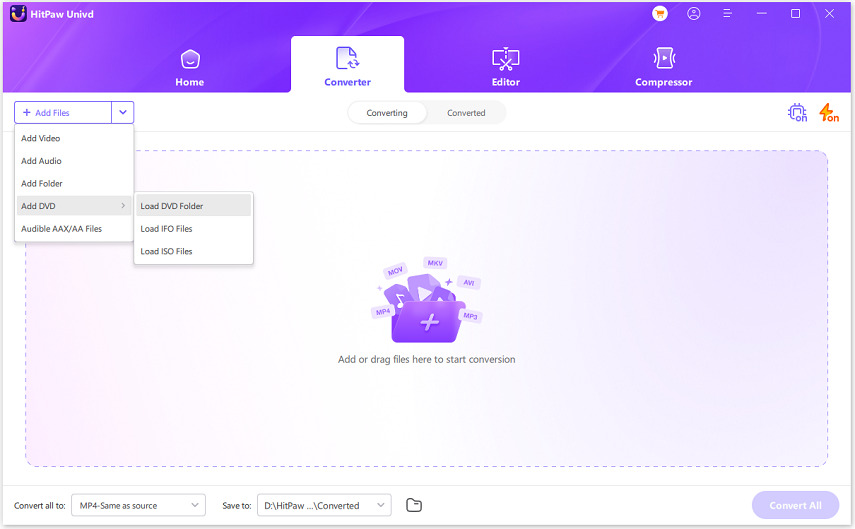
Step 4: Configure Custom Output
Tap encoding preset dropdown next to imported VHS file names, tailor specific video and audio attributes like target format, aspect ratio, resolution quality, frame rate and other settings based on your preservation needs before initiating conversion process.

Step 5: Enhance and Convert VHS to Digital
Enable HitPaw's integrated enhancement tools like stabilization and noise reduction to rescue damaged VHS content, then click main "Convert" button to commence full VHS footage digitization process at accelerated speeds.
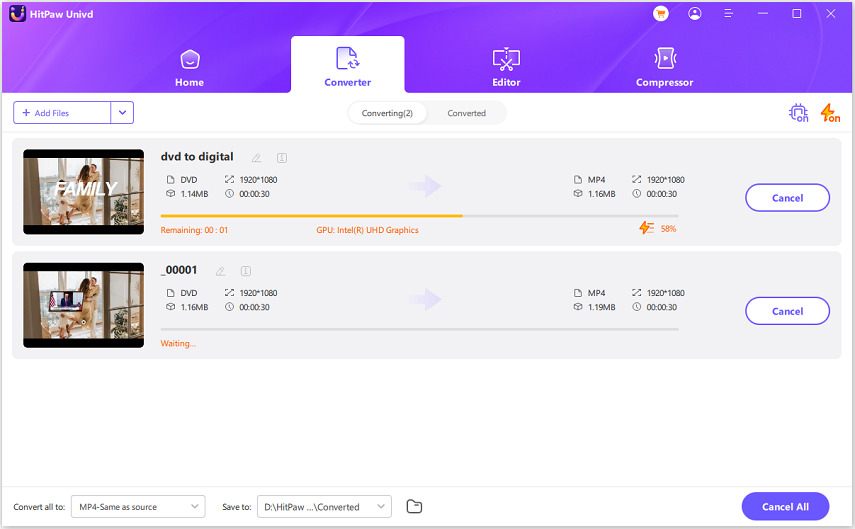
Step 6: Export and Share
Finally locate successfully converted VHS files in the "Converted" section, preview as needed, then directly export the digitized videos out to access and enjoy breath of life on legacy tapes!
2. Walmart Video Transfer
Walmart makes digitizing VHS recordings easy through their Video Conversion service available onsite at most U.S store locations. This convenient service transfers VHS, along with many other media types, directly onto DVDs, flash drives or the Walmart cloud for playback on modern devices.
Pricing depends on quantity, speed and storage medium, but starts at $15.96 per 1-hour VHS tape converted with typical turnaround time under 2 weeks.
3. Costco Video Transfer
Similar to Walmart, Costco warehouses offer a Photo Center service to take legacy media like VHS tapes and digitally convert recordings for modern, long-term preservation. Costco transfers video to thumb drives or cloud storage charging starting at $19.99. It guarantees videos will be ready for pickup within 5-7 business days.
FAQs about VCR and VHS
Q1. Which came first VCR or VHS?
A1. The VCR (videocassette recorder) debuted first in 1956, with the first VHS (video home system) videotape format launching much later in 1976. So, the technology behind taping and playing back video was developed before the VHS format standard we now commonly associate with VHS tapes.
Q2. Can you watch VHS tapes without a VCR?
A2. No, a VCR is required to play back and watch content stored on VHS tapes. VHS tapes store analog video signals that require a VCR deck and magnetic tape heads to read. Without that specialized VCR equipment, the contents of a VHS tape cannot be accessed.
Q3. Do I need a VCR to convert VHS to DVD?
A3. Typically, yes, you need a working VCR player connected to a computer or disc burner to perform real-time video capture and conversion of VHS analog footage into DVD digital file formats. However, some paid outside conversion services with legacy VCR gear can transfer VHS to DVD on your behalf.
Conclusion
Digitally preserving aging VHS tape content requires usable access to rapidly disappearing VCR hardware. For most home consumers lacking VCR decks, intuitive VHS conversion software like HitPaw Univd offers an affordable, accessible solution. Paired with retailers offering video transfer services, HitPaw makes salvaging precious memories simple. Rescue your analog tapes before degradation sets in and memories fade for good through digitalization.







 HitPaw VoicePea
HitPaw VoicePea  HitPaw VikPea (Video Enhancer)
HitPaw VikPea (Video Enhancer)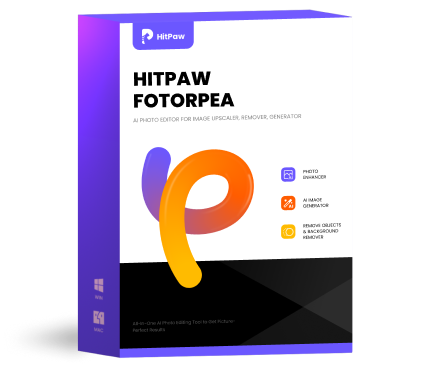 HitPaw FotorPea
HitPaw FotorPea
Share this article:
Select the product rating:
Daniel Walker
Editor-in-Chief
My passion lies in bridging the gap between cutting-edge technology and everyday creativity. With years of hands-on experience, I create content that not only informs but inspires our audience to embrace digital tools confidently.
View all ArticlesLeave a Comment
Create your review for HitPaw articles